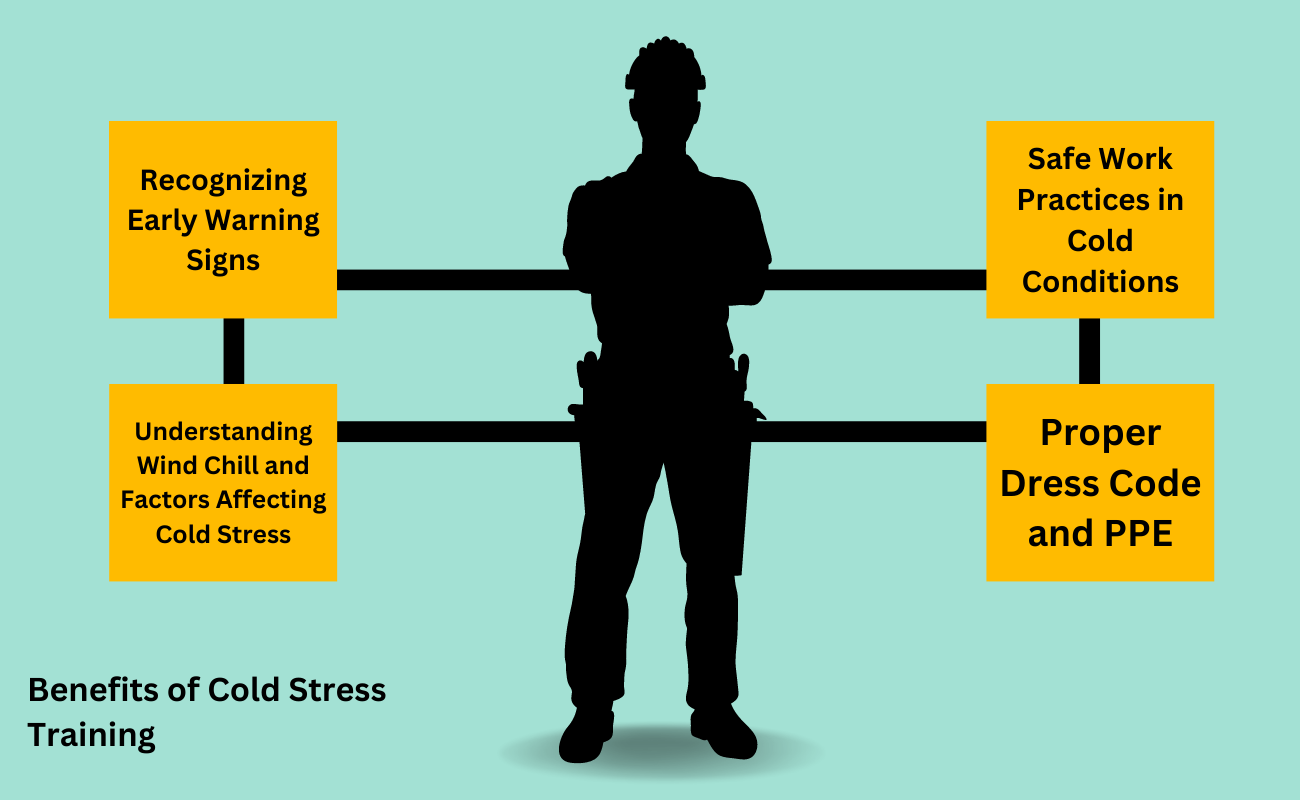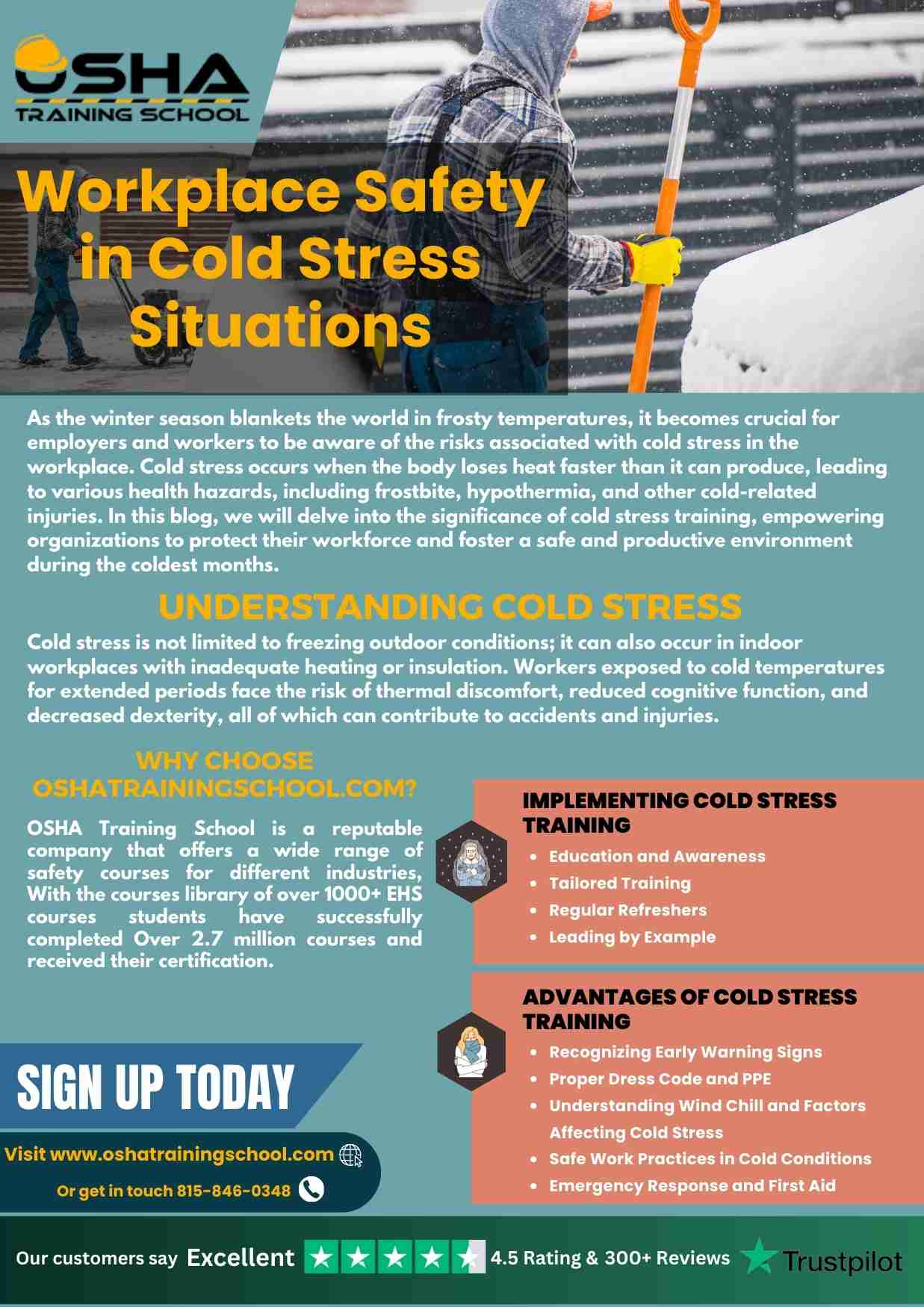
Clean Air Act: History, Standards & Safety
The Clean Air Act (CAA) is a federal law that regulates air emissions from both stationary (industrial) and mobile sources throughout...


As the winter season blankets the world in frosty temperatures, it becomes crucial for employers and workers to be aware of the risks associated with cold stress in the workplace. Cold stress occurs when the body loses heat faster than it can produce, leading to various health hazards, including frostbite, hypothermia, and other cold-related injuries. In this blog, we will delve into the significance of cold stress training, empowering organizations to protect their workforce and foster a safe and productive environment during the coldest months.
Cold stress is not limited to freezing outdoor conditions; it can also occur in indoor workplaces with inadequate heating or insulation. Workers exposed to cold temperatures for extended periods face the risk of thermal discomfort, reduced cognitive function, and decreased dexterity, all of which can contribute to accidents and injuries.

1. Recognizing Early Warning Signs: Cold stress training equips workers with the ability to identify early warning signs of cold-related illnesses such as shivering, numbness, and discoloration of the skin. Prompt recognition allows for timely intervention, preventing the situation from escalating.
2. Proper Dress Code and PPE: Training sessions emphasize the importance of wearing appropriate clothing and personal protective equipment (PPE) suitable for cold environments. From insulated gloves and hats to layered clothing, workers learn how to stay warm while remaining agile and comfortable.
3. Understanding Wind Chill and Factors Affecting Cold Stress: Cold stress training provides insights into the impact of wind chill and humidity on the body's heat loss. By comprehending these factors, workers can adjust their practices and clothing choices accordingly.
4. Safe Work Practices in Cold Conditions: Specific work practices may need modification to accommodate cold temperatures. Training sessions shed light on adapting tasks, scheduling breaks, and rotating workers to minimize prolonged exposure to harsh weather.
5. Emergency Response and First Aid: Cold stress training educates workers on how to respond to cold-related emergencies promptly. From administering first aid for frostbite and hypothermia to seeking medical attention, being well-prepared can save lives.
2. Tailored Training: Customize training to suit specific job roles and the particular cold stress risks associated with each. Workers in outdoor construction may require different insights than those in refrigerated warehouses.
3. Regular Refreshers: Periodic cold stress training refreshers are vital to reinforce knowledge and adapt to changing workplace conditions or personnel.
4. Leading by Example: Employers and supervisors should demonstrate a commitment to safety by following cold stress protocols themselves, fostering a culture of safety from the top down.
Cold stress training is an indispensable aspect of workplace safety, particularly during winter months and in cold environments. By empowering workers with the knowledge and tools to recognize, prevent, and respond to cold stress, employers demonstrate their dedication to employee well-being and productivity. With everyone well-prepared to face the chill, organizations can mitigate the risks of cold stress and create a safe, healthy, and thriving work environment for all.


The Clean Air Act (CAA) is a federal law that regulates air emissions from both stationary (industrial) and mobile sources throughout...

In 2023, private industry employers in the U.S. reported 2.6 million nonfatal workplace injuries and illnesses, down 8.4% from the previous...

The OSHA Training Institute (OTI) is the official training and education arm of the Occupational Safety and Health Administration (OSHA)...

The term “OSHA 40-Hour Certification” is one of the most common misconceptions in workplace safety training. Many...

Every year, thousands of workers are injured or lose their lives in workplace accidents. These incidents highlight...

Workplace safety is regulated at both the federal and state levels. In Virginia, the Virginia State Plan, also known as...